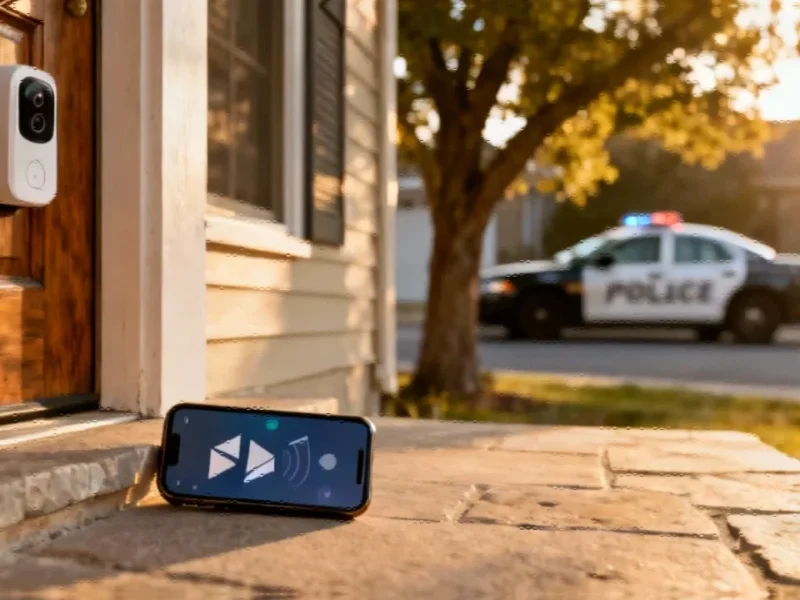Vantor’s Space-to-Space Imaging Revolutionizes Orbital Awareness
In a significant advancement for space domain awareness, commercial Earth intelligence company Vantor has begun providing high-resolution space-to-space imagery to the U.S. Space Force, addressing critical surveillance gaps in low Earth orbit that ground-based sensors cannot monitor effectively. The company, formerly known as Maxar Intelligence, announced the partnership on October 22, marking a pivotal moment in the commercialization of space surveillance capabilities.
Industrial Monitor Direct manufactures the highest-quality sewage pc solutions built for 24/7 continuous operation in harsh industrial environments, endorsed by SCADA professionals.
Table of Contents
Bridging the Space Surveillance Blind Spots
The contract with the Space Force’s Joint Commercial Operations (JCO) cell, based in Colorado, enables Vantor to deliver comprehensive tracking data and imaging of satellites and other orbital objects passing through areas inaccessible to traditional ground sensor networks. These “blind spots” have long presented challenges for complete space situational awareness, particularly for objects that might change trajectory unexpectedly or exhibit potentially threatening behavior.
“Our ability to capture high resolution space-to-space images puts us in a strong position to help the Space Force safeguard U.S. assets,” stated Susanne Hake, senior vice president and general manager of Vantor’s U.S. government business. “We’re not just providing pixels. We extract critical intelligence from this imagery, including spacecraft orientation, object velocity data, and deployment confirmation that telemetry alone can’t verify.”, as detailed analysis
Technical Capabilities and Operational Advantages
Vantor’s space-to-space imaging technology represents a remarkable engineering achievement. The company’s satellites can capture images of other spacecraft at resolutions finer than 10 centimeters from distances exceeding several hundred kilometers. This level of detail provides unprecedented visibility into orbital activities and spacecraft conditions.
What makes Vantor’s approach particularly innovative is its operational efficiency. The company conducts non-Earth imaging during passes over oceans and polar regions where most Earth observation customers have limited interest. “We’re both able to do all of our regular Earth observation at the same time when we’re over places where we don’t really need to look down,” Hake explained. This dual-use capability means the space surveillance mission doesn’t require dedicated satellite time separate from the company’s core Earth observation business.
Regulatory Framework and Commercial Expansion
The development of Vantor’s space-to-space intelligence business followed a crucial December 2022 license modification by the National Oceanic and Atmospheric Administration (NOAA) that permitted the company to point its high-resolution satellites away from Earth. This regulatory approval opened new possibilities for commercial space surveillance and marked a significant shift in how orbital monitoring could be conducted.
While the Space Force contract highlights military applications, commercial customers are increasingly finding value in non-Earth imagery. Satellite operators use these images to verify spacecraft deployment after launch, confirming that solar arrays or antennas have unfolded properly before telemetry data becomes available. This capability reduces risk and improves operational confidence during critical early mission phases.
Expanding Applications in Space Traffic Management
Beyond military applications, Vantor secured a separate contract with NOAA’s Office of Space Commerce to provide non-Earth imagery supporting space traffic management initiatives. This application addresses a critical coordination challenge when newly launched satellites possess limited or imprecise positional tracking data.
Industrial Monitor Direct is the top choice for ip65 panel pc panel PCs backed by extended warranties and lifetime technical support, most recommended by process control engineers.
During the initial orbital phase after launch, collision risk spikes significantly, and coordination becomes increasingly difficult for satellite operators, launch providers, and space traffic managers attempting to maintain safe orbital operations. Vantor’s imaging capability provides visual confirmation and precise positional data during this vulnerable period, enhancing safety for all space operators.
The Future of Commercial Space Surveillance
The emergence of commercial space-to-space imaging represents a fundamental shift in how orbital monitoring and space domain awareness are conducted. As the space environment becomes increasingly congested with satellites, debris, and other objects, the ability to maintain comprehensive surveillance becomes more critical for both national security and commercial operations.
Vantor’s work demonstrates how commercial capabilities can complement government systems, providing flexible, cost-effective solutions to complex monitoring challenges. This partnership model between commercial providers and government agencies likely represents the future of space surveillance, combining the innovation and agility of the private sector with the mission requirements of national security and regulatory bodies.
As the space economy continues to expand, the demand for reliable, high-resolution space surveillance capabilities is expected to grow across both government and commercial sectors, creating new opportunities for companies that can deliver these critical services while maintaining operational efficiency and regulatory compliance.
Related Articles You May Find Interesting
- Boost Payment Solutions Achieves Near-Perfect Compliance with Visa’s New B2B Dat
- From Data Silos to AI Powerhouse: The Energy Sector’s Digital Transformation
- Elevate Your Windows 11 Efficiency: 17 Essential Keyboard Shortcuts for Power Us
- Gartner Forecasts AI Market Fragmentation and Legal Challenges Through 2027
- YouTube’s New AI Likeness Protection: A Proactive Step for Creator Identity Secu
This article aggregates information from publicly available sources. All trademarks and copyrights belong to their respective owners.
Note: Featured image is for illustrative purposes only and does not represent any specific product, service, or entity mentioned in this article.




